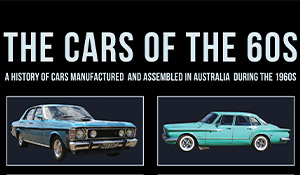1957 BMW Isetta 250. August 2006
That's exactly the approach BMW took when they saw a 'good thing' in the form of the Iso 'Isetta' microcar that debuted in its native Italy in 1953 and drew a wider audience with a very creditable performance in the 1955 Mille Miglia 1,000 mile race. The Isetta's departure from traditional styling cues, as evidenced by the door on the front, ensured it drew a lot of attention. It wasn't long before not only BMW, but many others came knocking on the door of the Italian whitegoods manufacturer.
The Isetta was compact, practical, usable and affordable. That last point was a key one for BMW, who were in dire financial straits in the mid to late 1950s, the spectre of a hostile takeover by Mercedes Benz sending company execs hunting for a guaranteed money spinner. The boys from Bavaria believed they found it in the form of the Isetta.
Eberhard Wolff is the BMW engineer credited with the foresight to see the Isetta's potential in 1954. The approach to Iso, procurement of manufacturing rights and production facilities followed in rapid succession, the first BMW Isetta hitting the showroom floor in 1955. It proved to be a winning move, BMW shifting almost 13,000 in the first year alone.
To make the Isetta their own, BMW dropped in their 245cc motorcycle engine from the outset. BMW's motorbike range, like their saloons and sportscars, were in a sales slump at the time, and the BMW four stroke single cylinder was a good fit to the existing chassis and a better engine than the smoky and noisy Iso unit, so why not?
At the same time as BMW were introducing their Isetta, French firm VELAM offered an Isetta with a French accent. UK-built Isettas, based on the BMW pattern, soon followed, but with a single rear wheel for cheaper road tax and licensing purposes.
The swift success of the Isetta took even BMW by surprise, paving the way for a 298cc model, a larger, four-seater '600' that debuted in 1957 and the conventionally-styled '700' car that followed. The original 250 remained popular, however. Production topped 100,000 by 1958, bowing out with over 140,000 in 1962, all of which begs the question of why so few are still around today.
The simple answer is that when people no longer had to have these cars (for reasons of economy of choice), they quickly moved up to bigger, roomier vehicles. Isettas, like most other microcars of the era, were also 'one accident' cars ie., they rarely survived a major smash, and weren't deemed worth repairing for all but the most minor dings. Consequently, vehicles like our feature car are highly prized today.
Originally a UK car, this Isetta came to Queensland via Melbourne and was treated to a full restoration by 'Sleeping Beauties' several years back. If you know this firm, you'll be aware of their high standard of workmanship. Our feature car upholds that standard.
A respray in deep blue metallic mica looks good, as do the tubular front bumpers, a feature more common on UK Isettas than Continental ones.
Inside, the upholstery and carpeting are very fresh, the dash (if you could call it that!) and steering wheel in similarly good condition. The speedo shows only 311 kms (presumably since the restoration). The rest of the interior, along with the brightwork, trim and sunroof, is hard to fault. Motor is an original BMW unit and appears to run well.
Today, everyone seems to love cars like the Isetta, drawn by their rarity and undeniable cuteness! While once utilitarian, the Isetta is very much an 'image' car now, the modern buyer after its looks, not its performance, although it is very economical.
The only foible - if you could call it that - is that with the driver in place, the weight is all on the right hand side. The original Isetta - with LHD markets in mind - deliberately placed the engine to the right of centre, so the left hand drive passenger would balance out the weight distribution. But in all honesty, if you're driving so fast or cornering so hard for the imbalance to be noticed, you probably shouldn't be driving this car at all!
The collectability of these cars today means this one is unlikely to stay on the Oldtimer Australia floor for long. Want it? Get on the bandwagon quick! You're unlikely to come across another one anytime soon.
Mike Ryan
WHAT, WHERE, WHEN & HOW MUCH
Model: BMW Isetta 250
Year: 1957
Dealer: Oldtimer Australia, Kangaroo Point, QLD
Ph: (07) 3391 7300, 0411 476 055
www.oldtimeraustralia.com
Price: $19,500
0-100 kph: I wouldn't if I was you
Best point: Impossible to ignore
Worst point: Almost impossible to get spares for
Recommendation: Highly collectable fun car
Trivia: BMW knew the importance of 'star power' in promoting their vehicles. Thus, Isettas were placed in the company of Cary Grant, Elvis Presley and Stirling Moss to boost the bubble car's profile



![2015 holden commodore vf sv6 storm 3.6i [my15] 6 sp sports automatic sedan](https://cdn.justauto.com.au/ad-assets%2F21712--4489%2Ffield_images%2F21712_4489_1.jpg)








